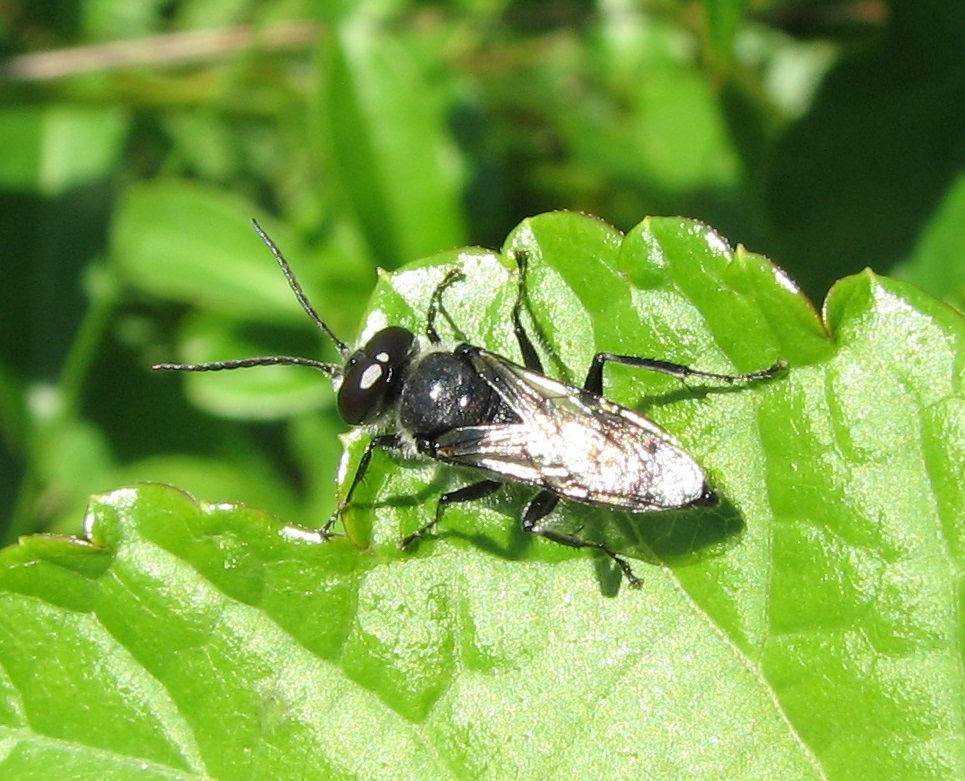|
Eremochares Mirabilis
''Eremochares ''is a genus of wasp in the family Crabronidae The Crabronidae are a large paraphyletic group (nominally a family) of wasps, including nearly all of the species formerly comprising the now-defunct superfamily Sphecoidea. It collectively includes well over 200 genera, containing well over 9 .... Species The genus ''Eremochares'' contains 6 extant species: * '' Eremochares clypevariatus'' Yan and Ma, 2015 * '' Eremochares dives'' ( Brullé, 1833) * '' Eremochares ferghanicus'' ( Gussakovskij, 1930) * '' Eremochares kohlii'' ( Gussakovskij, 1928) * '' Eremochares luteus'' ( Taschenberg, 1869) * '' Eremochares mirabilis'' ( Gussakovskij, 1928) References {{Taxonbar, from=Q4038176 Sphecidae Apoidea genera ... [...More Info...] [...Related Items...] OR: [Wikipedia] [Google] [Baidu] |
Animal
Animals are multicellular, eukaryotic organisms in the Kingdom (biology), biological kingdom Animalia. With few exceptions, animals Heterotroph, consume organic material, Cellular respiration#Aerobic respiration, breathe oxygen, are Motility, able to move, can Sexual reproduction, reproduce sexually, and go through an ontogenetic stage in which their body consists of a hollow sphere of Cell (biology), cells, the blastula, during Embryogenesis, embryonic development. Over 1.5 million Extant taxon, living animal species have been Species description, described—of which around 1 million are Insecta, insects—but it has been estimated there are over 7 million animal species in total. Animals range in length from to . They have Ecology, complex interactions with each other and their environments, forming intricate food webs. The scientific study of animals is known as zoology. Most living animal species are in Bilateria, a clade whose members have a Symmetry in biology#Bilate ... [...More Info...] [...Related Items...] OR: [Wikipedia] [Google] [Baidu] |
Crabronidae
The Crabronidae are a large paraphyletic group (nominally a family) of wasps, including nearly all of the species formerly comprising the now-defunct superfamily Sphecoidea. It collectively includes well over 200 genera, containing well over 9000 species. Crabronids were originally a part of Sphecidae, but the latter name is now restricted to a separate family based on what was once the subfamily Sphecinae. Several of the subfamilies of Crabronidae are often treated as families in their own right, as is true of the most recent phylogenies (example below). Phylogeny This phylogenetic tree is based on Sann ''et al.'', 2018, which used phylogenomics to demonstrate that both the bees (Anthophila) and the Sphecidae arose from within the former Crabronidae, which is therefore paraphyletic, and which they suggested should be split into several families; the former family Heterogynaidae nests within the Bembicidae, as here defined. These findings differ in several details from studie ... [...More Info...] [...Related Items...] OR: [Wikipedia] [Google] [Baidu] |
Ernst Ludwig Taschenberg
Ernst Ludwig Taschenberg (10 January 1818 Naumburg – 19 January 1898 Halle) was a German entomologist. Life After 1836 Taschenberg studied mathematics and natural sciences in Leipzig and Berlin. He went, then, as an auxiliary teacher to the Franckesche Stiftungen and dedicated himself to arranging the important beetle collection of professor Germar and with the curation and study of the insect collection of the zoological museum particularly the entomology collections. He worked as a teacher in Seesen for two years and then in five Zahna for five years but in 1856 he became “Inspektor“ at the zoological museum in Halle and in 1871 he was appointed extraordinary professor. His insect studies were mainly applied to agriculture, horticulture and silviculture and he is an important figure in the history of Economic entomology. He also described new insect species in several orders. His son Ernst Otto Wilhelm Taschenberg was also an entomologist specialising in Hymenoptera. Wo ... [...More Info...] [...Related Items...] OR: [Wikipedia] [Google] [Baidu] |
Eremochares Luteus
''Eremochares ''is a genus of wasp in the family Crabronidae. Species The genus ''Eremochares'' contains 6 extant species: * '' Eremochares clypevariatus'' Yan and Ma, 2015 * '' Eremochares dives'' ( Brullé, 1833) * '' Eremochares ferghanicus'' ( Gussakovskij, 1930) * '' Eremochares kohlii'' ( Gussakovskij, 1928) * '' Eremochares luteus'' ( Taschenberg, 1869) * ''Eremochares mirabilis ''Eremochares ''is a genus of wasp in the family Crabronidae The Crabronidae are a large paraphyletic group (nominally a family) of wasps, including nearly all of the species formerly comprising the now-defunct superfamily Sphecoidea. It ...'' ( Gussakovskij, 1928) References {{Taxonbar, from=Q4038176 Sphecidae Apoidea genera ... [...More Info...] [...Related Items...] OR: [Wikipedia] [Google] [Baidu] |
Eremochares Kohlii
''Eremochares ''is a genus of wasp in the family Crabronidae. Species The genus ''Eremochares'' contains 6 extant species: * '' Eremochares clypevariatus'' Yan and Ma, 2015 * '' Eremochares dives'' ( Brullé, 1833) * '' Eremochares ferghanicus'' ( Gussakovskij, 1930) * '' Eremochares kohlii'' ( Gussakovskij, 1928) * ''Eremochares luteus'' ( Taschenberg, 1869) * ''Eremochares mirabilis ''Eremochares ''is a genus of wasp in the family Crabronidae The Crabronidae are a large paraphyletic group (nominally a family) of wasps, including nearly all of the species formerly comprising the now-defunct superfamily Sphecoidea. It ...'' ( Gussakovskij, 1928) References {{Taxonbar, from=Q4038176 Sphecidae Apoidea genera ... [...More Info...] [...Related Items...] OR: [Wikipedia] [Google] [Baidu] |
Vsevolod Gussakovskiy
Vsevolod Vladimirovich Gussakovskiy (11 October 1911 in Tsarskoye Selo – September, 1948) was a Soviet entomologist who specialised in Hymenoptera. He described many new species. His collections from Turkestan are held (ex parte) by the Zoological Museum of the Zoological Institute of the Russian Academy of Sciences The Zoological Museum of the Zoological Institute of the Russian Academy of Sciences is a Russian museum devoted to zoology. It is located in Saint Petersburg, on Universitetskaya Embankment. It is one of the ten largest nature history museums .... Works *Gussakovskiy, V. V., 1930. Novyie i malo izvestnyie vidy rodov Ammophila Kby. I Sphex L. (Hymenoptera, Sphecidae) Species novae vel parum cognitae generum Ammophila Kby. et Sphex L. (Hymenoptera, Sphecidae). ''Russkoye Entomologicheskoye Obozreniye'' 24 : 1 99-211 . *Gussakovskiy, V. V., 1933 (1932). Sphecidae i Psammocharidae (Hymenoptera), sobrannyie N. Zarudnym v vostochnoy Persii Sphecidae et Psammochari ... [...More Info...] [...Related Items...] OR: [Wikipedia] [Google] [Baidu] |
Eremochares Ferghanicus
''Eremochares ''is a genus of wasp in the family Crabronidae. Species The genus ''Eremochares'' contains 6 extant species: * '' Eremochares clypevariatus'' Yan and Ma, 2015 * ''Eremochares dives'' ( Brullé, 1833) * '' Eremochares ferghanicus'' ( Gussakovskij, 1930) * ''Eremochares kohlii'' ( Gussakovskij, 1928) * ''Eremochares luteus'' ( Taschenberg, 1869) * ''Eremochares mirabilis ''Eremochares ''is a genus of wasp in the family Crabronidae The Crabronidae are a large paraphyletic group (nominally a family) of wasps, including nearly all of the species formerly comprising the now-defunct superfamily Sphecoidea. It ...'' ( Gussakovskij, 1928) References {{Taxonbar, from=Q4038176 Sphecidae Apoidea genera ... [...More Info...] [...Related Items...] OR: [Wikipedia] [Google] [Baidu] |
Eremochares Clypevariatus
''Eremochares ''is a genus of wasp in the family Crabronidae. Species The genus ''Eremochares'' contains 6 extant species: * '' Eremochares clypevariatus'' Yan and Ma, 2015 * ''Eremochares dives'' ( Brullé, 1833) * ''Eremochares ferghanicus'' ( Gussakovskij, 1930) * ''Eremochares kohlii'' ( Gussakovskij, 1928) * ''Eremochares luteus'' ( Taschenberg, 1869) * ''Eremochares mirabilis ''Eremochares ''is a genus of wasp in the family Crabronidae The Crabronidae are a large paraphyletic group (nominally a family) of wasps, including nearly all of the species formerly comprising the now-defunct superfamily Sphecoidea. It ...'' ( Gussakovskij, 1928) References {{Taxonbar, from=Q4038176 Sphecidae Apoidea genera ... [...More Info...] [...Related Items...] OR: [Wikipedia] [Google] [Baidu] |
California Academy Of Sciences
The California Academy of Sciences is a research institute and natural history museum in San Francisco, California, that is among the largest museums of natural history in the world, housing over 46 million specimens. The Academy began in 1853 as a learned society and still carries out a large amount of original research. The institution is located at the Golden Gate Park in San Francisco. Completely rebuilt in 2008, the Academy's primary building in Golden Gate Park covers . In early 2020, before the COVID-19 pandemic, the California Academy of Sciences had around 500 employees and an annual revenue of about $33 million. Governance The California Academy of Sciences, California's oldest operating museum and research institution for the natural sciences, is governed by a forty-one member Board of Trustees who are nominated and chosen by the California Academy of Sciences Fellows. The Academy Fellows are, in turn, " minated by their colleagues and appointed by the Board of Tr ... [...More Info...] [...Related Items...] OR: [Wikipedia] [Google] [Baidu] |
Wasp
A wasp is any insect of the narrow-waisted suborder Apocrita of the order Hymenoptera which is neither a bee nor an ant; this excludes the broad-waisted sawflies (Symphyta), which look somewhat like wasps, but are in a separate suborder. The wasps do not constitute a clade, a complete natural group with a single ancestor, as bees and ants are deeply nested within the wasps, having evolved from wasp ancestors. Wasps that are members of the clade Aculeata can Stinger, sting their prey. The most commonly known wasps, such as yellowjackets and hornets, are in the family Vespidae and are Eusociality, eusocial, living together in a nest with an egg-laying queen and non-reproducing workers. Eusociality is favoured by the unusual haplodiploid system of sex-determination system, sex determination in Hymenoptera, as it makes sisters exceptionally closely related to each other. However, the majority of wasp species are solitary, with each adult female living and breeding independently ... [...More Info...] [...Related Items...] OR: [Wikipedia] [Google] [Baidu] |
Arthropod
Arthropods (, (gen. ποδός)) are invertebrate animals with an exoskeleton, a Segmentation (biology), segmented body, and paired jointed appendages. Arthropods form the phylum Arthropoda. They are distinguished by their jointed limbs and Arthropod cuticle, cuticle made of chitin, often Mineralization (biology), mineralised with calcium carbonate. The arthropod body plan consists of segments, each with a pair of appendages. Arthropods are bilaterally symmetrical and their body possesses an exoskeleton, external skeleton. In order to keep growing, they must go through stages of moulting, a process by which they shed their exoskeleton to reveal a new one. Some species have wings. They are an extremely diverse group, with up to 10 million species. The haemocoel, an arthropod's internal cavity, through which its haemolymph – analogue of blood – circulates, accommodates its interior Organ (anatomy), organs; it has an open circulatory system. Like their exteriors, the internal or ... [...More Info...] [...Related Items...] OR: [Wikipedia] [Google] [Baidu] |
Genus
Genus ( plural genera ) is a taxonomic rank used in the biological classification of extant taxon, living and fossil organisms as well as Virus classification#ICTV classification, viruses. In the hierarchy of biological classification, genus comes above species and below family (taxonomy), family. In binomial nomenclature, the genus name forms the first part of the binomial species name for each species within the genus. :E.g. ''Panthera leo'' (lion) and ''Panthera onca'' (jaguar) are two species within the genus ''Panthera''. ''Panthera'' is a genus within the family Felidae. The composition of a genus is determined by taxonomy (biology), taxonomists. The standards for genus classification are not strictly codified, so different authorities often produce different classifications for genera. There are some general practices used, however, including the idea that a newly defined genus should fulfill these three criteria to be descriptively useful: # monophyly – all descendants ... [...More Info...] [...Related Items...] OR: [Wikipedia] [Google] [Baidu] |


_b_0099_1.jpg)


